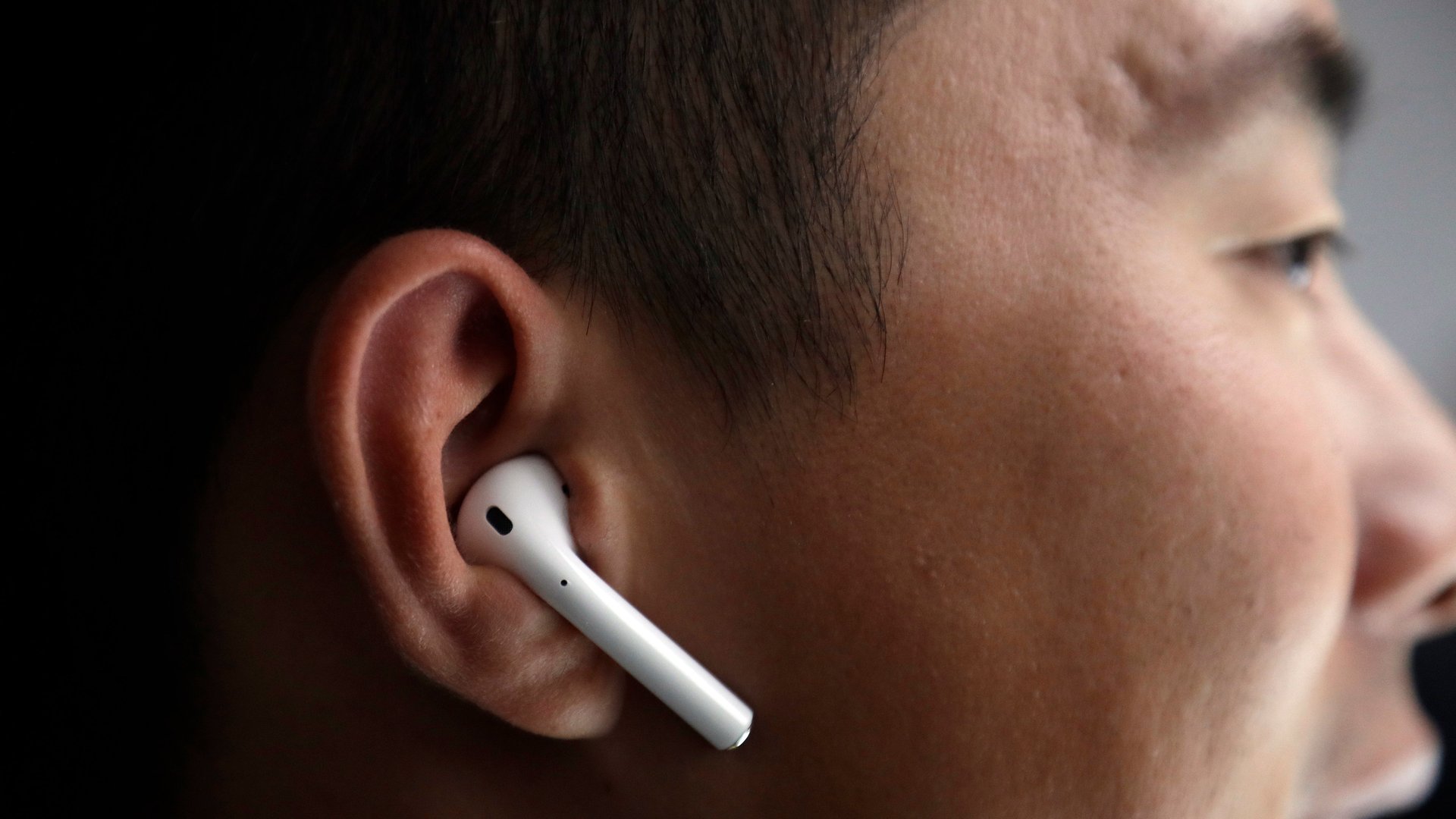AirPods are what the Apple Watch should’ve been
Apple has put out a string of iterative or uninspiring products over the last few years, from the iPhones that have looked the same since 2014 and watches that have taken years to perfect, to iPads that haven’t evolved much since they were introduced eight years ago. But there’s one outlier: AirPods.


Apple has put out a string of iterative or uninspiring products over the last few years, from the iPhones that have looked the same since 2014 and watches that have taken years to perfect, to iPads that haven’t evolved much since they were introduced eight years ago. But there’s one outlier: AirPods.
Apple’s $160 wireless earbuds, first released after a string of delays in late 2016, are exceedingly useful, hassle-free, and wonderfully designed. Like many Apple products from the Steve Jobs era, AirPods “just work.” They connect automatically to your iPhone when you open their case for the first time—there’s no hunting around in Bluetooth settings for the earbuds—and they’ll be ready to connect to any other Apple device using the same iCloud account. They’re a perfect hands-free headset, and even users who complain that most Apple earbuds won’t stay in place have lauded the AirPods. They fit snugly in even the smallest pockets, and easily the most convenient wireless earbuds on the market. Try finding any other wireless headphones with as small a charging case that can last nearly as long.
In the early years of iPhone sales, Apple still generated much of its revenue selling iPods. Even if you bought a new iPhone 3G in 2008, you might still have purchased an iPod Shuffle or Nano to bring to the gym, or an iPod Classic to hold your extensive music library that wouldn’t fit on the phone, or perhaps an iPod Touch for your kids who weren’t quite ready for their own phone. The iPod was the perfect product line, ranging in price from stocking-stuffer to special present, which served Apple well until the iPhone became an unstoppable sales juggernaut.
The iPhone now represents roughly two-thirds of Apple’s revenue in any give quarter, with consumers effectively killing off the iPod, as their phones (or apps) can hold all the music they desire. But Apple never really had that second reasonably affordable product offering after the iPhone cannibalized iPod sales. The Apple Watch looked like it could serve that purpose when it launched in 2015. It was about half the price of an iPhone, and required the owner to also have an iPhone, making it the very definition of a complementary device.
The Apple Watch probably hasn’t become quite the hit Apple would’ve liked. And though there are signs the watch’s popularity is on the rise, even if Apple refuses to release sales numbers, the company has moved away from marketing it as a general-purpose device, instead positioning it as essential for fitness enthusiasts or those with medical conditions that need to be tracked.
Without the iPod, Apple has lost that item users might not consider a major purchase (at least compared to other Apple products). The watch hasn’t quite proven that it’s simple or useful enough for the everyday consumer. AirPods, on the other hand, are one of the most seamless products Apple has released in years.
While many derided Apple’s decision to remove the headphone jack from its new phones in 2016, it’s hard to argue that Apple didn’t make a shrewd business decision. In that time, it’s launched a few wireless Beats headphones, and the AirPods. Combined with the watch and other peripherals, Apple’s accessories business generated over $15 billion in the last year. That alone would put Apple at 190th on the most recent Fortune 500 list.
AirPods may not win over audiophiles (then again, how amazing can listening to iTunes or Spotify on a phone really be?), but they will likely win over anyone who has ever pulled a jumbled ball of headphone wires out of their bag, or accidentally had their headphones yanked out by a passerby or fellow commuter. They do what they’re supposed to do, with little hassle or fanfare, and in a way that doesn’t significantly deviate from how other headphones work. It could end up being similar to those who resisted the iPhone because they preferred typing on a physical keyboard and eventually conceded, once they saw how useful they were—and that everyone else had one.
Apple likely won’t break out sales for the AirPods anytime soon, given how tight-lipped it’s been about the Apple Watch, and the headphones may never reach the heights that the iPod or other Apple devices have (few can make that claim anyway). But there’s a sense that they, or at least something like them, could be the future of Apple. AirPods, as my colleague Dave Gershgorn said when they were released, are the pinnacle of the Apple design philosophy: “Strip away everything but the essentials, then pare off a little more.”
It’s entirely possible to envision a near future where AirPods are computers with onboard storage and internet connections, much like the earbuds in nearly every science-fiction movie, and Siri replaces much of what we use our screens for today. The Apple Watch is effectively a miniaturized iPhone worn on the wrist, whereas AirPods feel like something truly new.